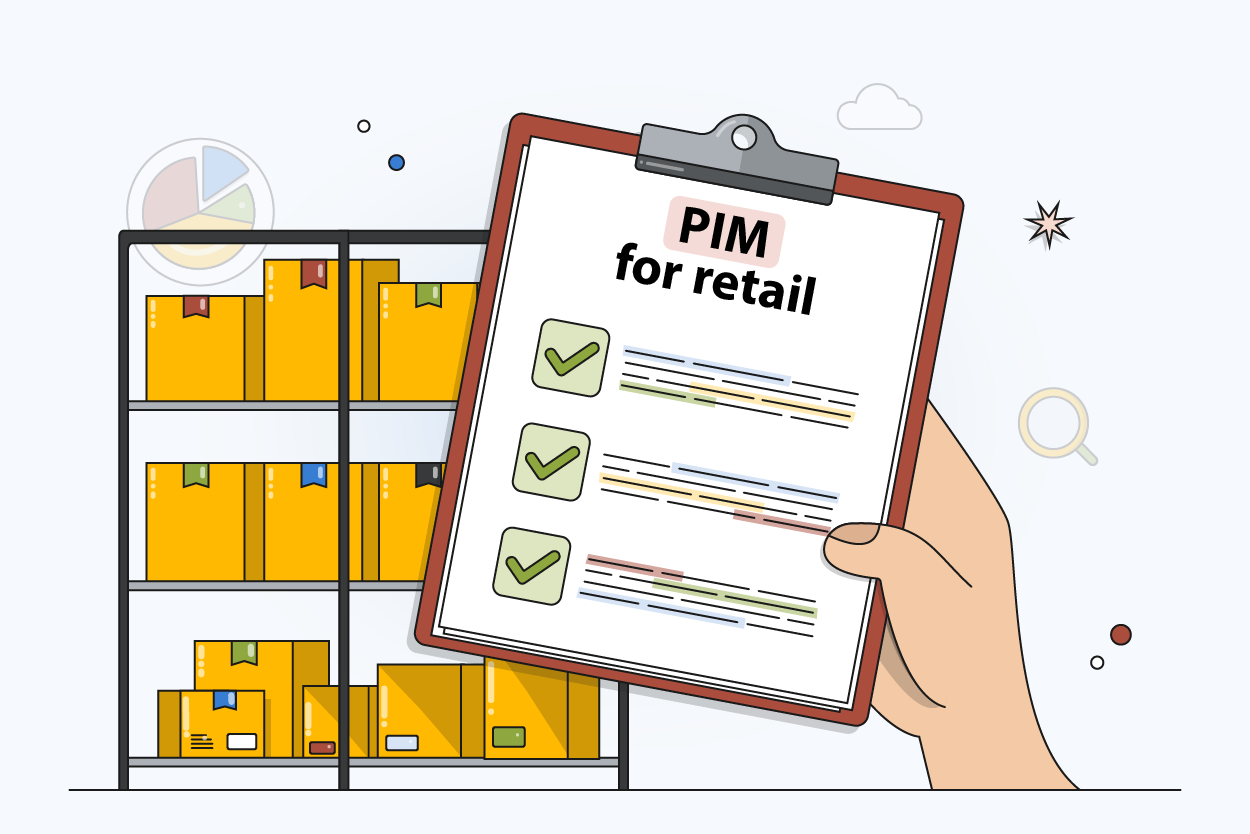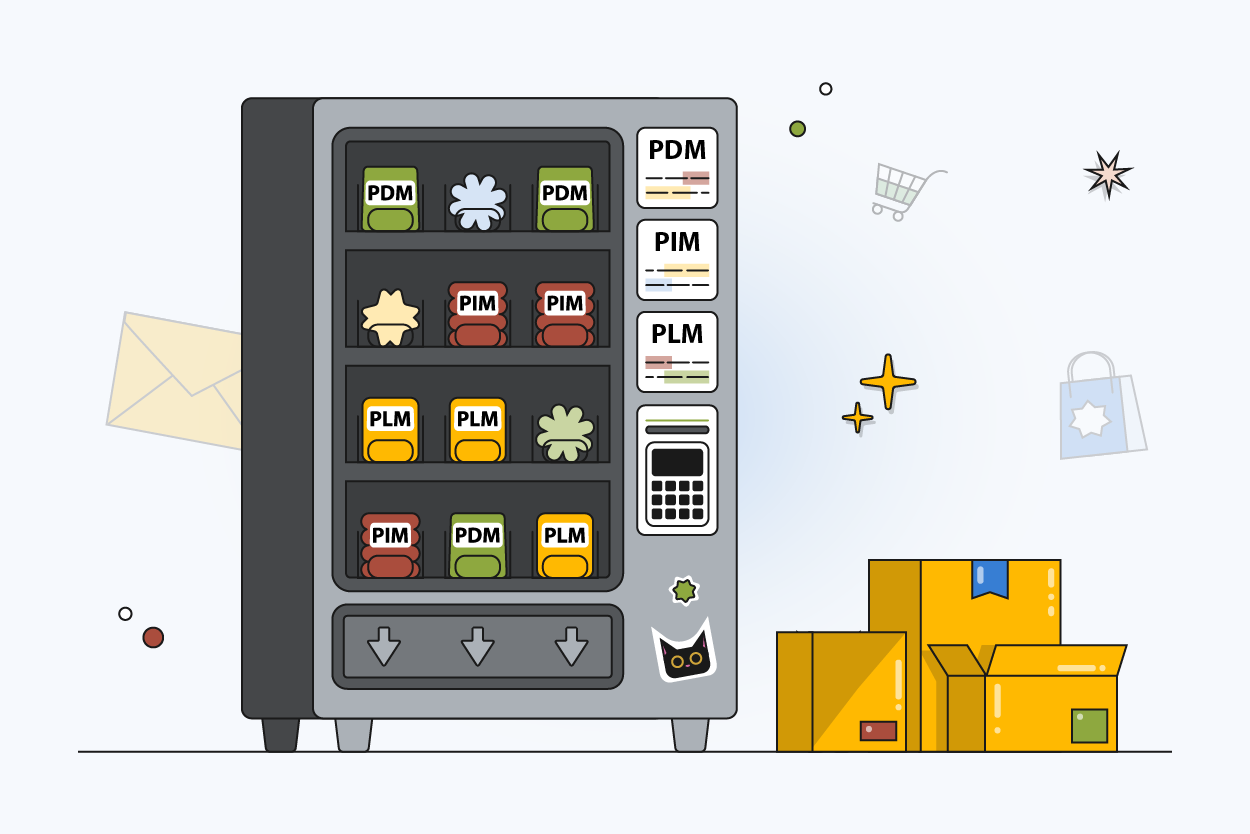PIM Trends 2025: The Future of Product Data Management
Author name: Bradley Taylor
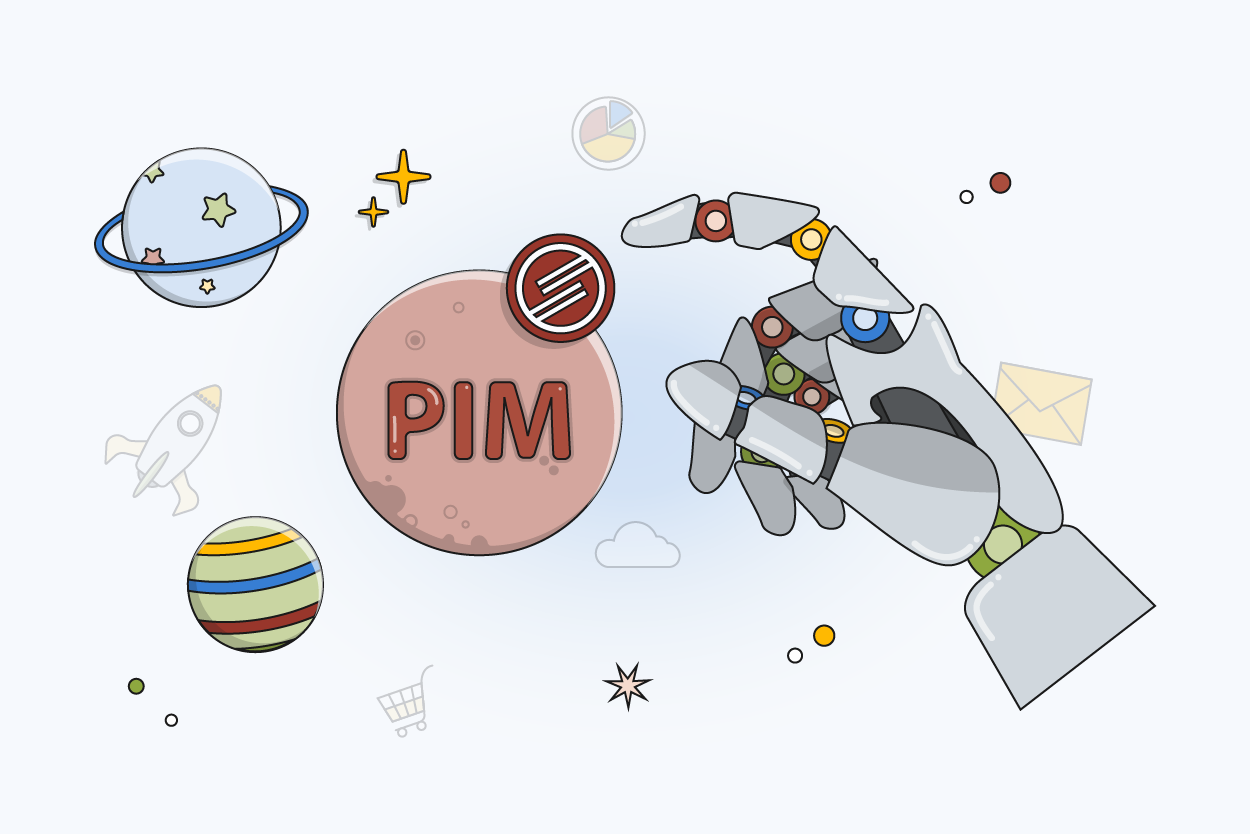
Product data is now one of the most valuable assets in commerce. Every channel depends on it. Every customer touchpoint relies on it. Whether you're selling through a marketplace, a direct-to-consumer site, or a wholesale portal, the quality and structure of your product information directly affect performance.
PIM, or Product Information Management, is the system that makes it possible to manage product data across all of those surfaces. Brands that treat it as a core part of their tech stack are moving faster, adopting more channels, and creating better buying experiences.
The benefits are only increasing as PIM systems continue to evolve rapidly. AI is transforming workflows. Real-time synchronization is becoming the standard. And modular PIM architectures are unlocking new levels of flexibility.
This article breaks down the key PIM trends for 2025, how they’re reshaping the industry, and what commerce teams can do to stay ahead.
Why PIM Is Becoming Critical for the Future
Modern commerce moves fast, and product data needs to keep up. Businesses update pricing, specs, and media across sales channels, POS networks, distributor feeds, and internal catalogs. Many still rely on spreadsheets and disconnected tools, which leads to delays, errors, and lost revenue.
This creates real problems for marketing teams and sales operations. Channels may have out-of-date product descriptions. Images go missing from retail displays. Digital asset management (DAM) becomes chaotic while compliance information gets lost in the shuffle.
The result? Frustrated customers, lost sales, and operational headaches that could be avoided with the right PIM solution.
Is Your Business Ready for PIM?
Take our 2-minute assessment and get personalized recommendations
- Analyze your current product data challenges
- Get instant recommendations based on your business profile
- See which PIMinto plan fits your needs
- Learn if PIM will solve your specific problems
The Current State of PIM
The product information management market continues to expand fast. Valued at $11.49 billion in 2023, it’s projected to grow at a 16.7% CAGR through 2030. This surge reflects rising pressure on businesses to manage complex product data efficiently.
With global e-commerce expected to reach $6.4 trillion by 2025, retailers and brands need tools that scale. PIM platforms meet that demand by organizing large catalogs and keeping product information consistent across physical and digital environments.
Key PIM Trends to Watch in 2025
Let's dive into the specific trends that will define PIM in 2025. These changes are already underway and actively reshaping how businesses manage and value product data.
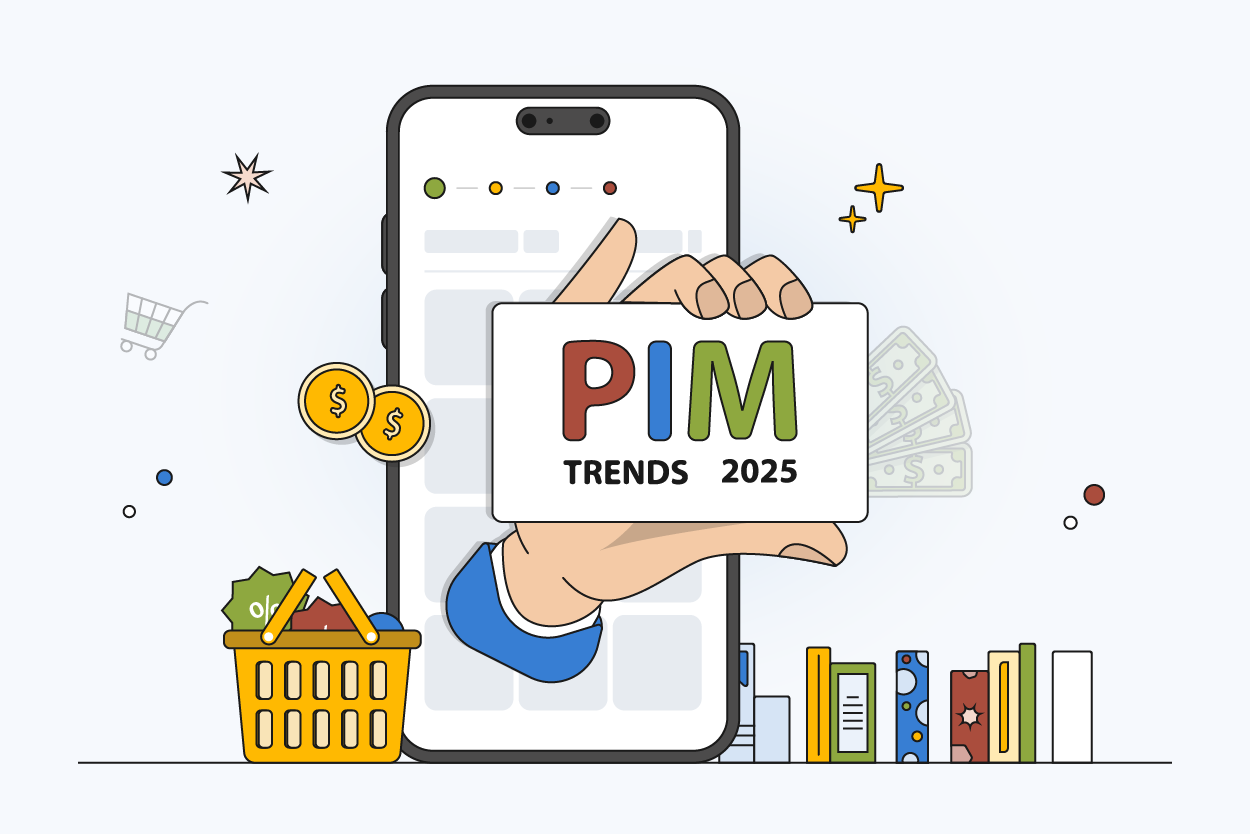
1. AI-Driven Automation
Artificial intelligence is moving from experimental to essential in PIM platforms. The technology is getting smarter, which makes it more reliable for everyday business use across the retail and broader PIM industry.
AI-powered PIM solutions can now handle tasks that used to take hours of manual work. They can write product descriptions automatically, pulling key features from technical specifications and turning them into customer-friendly copy perfect for marketing campaigns.
PIMinto’s AI assistant takes this even further by translating product content into multiple languages. Combined with the ability to enrich descriptions and handle repetitive data entry tasks automatically, teams can scale faster while reducing manual overhead.2. Omnichannel Data Synchronization
Omnichannel selling demands consistency across every customer touchpoint. Product data must stay accurate and aligned whether someone is browsing on social media, checking specs on your website, or purchasing in-store. Any mismatch damages trust and costs sales.
This level of synchronization requires sophisticated integration capabilities. Modern PIM software connects seamlessly with ERP, CRM, and eCommerce platforms. Through APIs or direct integration, they speak the same language as your other business systems, sharing data automatically and accurately across all distribution channels.
3. Data Quality as a Strategic Priority
Shoppers rely on product specifications, sizing dimensions, compatibility information, rich media, and other attributes to make confident buying decisions. If these details are missing or incorrect, the path to purchase breaks down. Merchants also lose valuable traffic when low-quality product pages perform poorly in search engines and marketplaces.
Modern PIM systems are improving how teams detect and prevent these data issues. Data validation capabilities can flag anomalies at scale, such as inconsistent attribute values across similar SKUs, duplicate content, or images that don’t match product categories. Teams can now identify these issues during the enrichment process instead of after publishing products.
4. Cloud-Based PIM Systems
Cloud-native PIM solutions now dominate the market. These platforms offer faster deployment, easier scalability, and simpler integration with other cloud-based tools. Teams can access and update product data from anywhere, which is essential for distributed workforces and global operations.
Cloud PIMs also reduce the burden on in-house IT teams. Vendors handle infrastructure maintenance, security updates, and performance optimization. This allows commerce and operations teams to focus on strategy and execution rather than system maintenance.
Modern cloud platforms are also more flexible in how they integrate with other platforms. API-first development and webhook support are becoming the standard, enabling faster integrations and real-time synchronization between systems.
5. Sustainability and Compliance
Sustainability is becoming more and more intertwined with product data management. Certain sectors must develop processes to track and share data regarding product source, material, recyclability, and carbon footprint.
These include meeting new regulations such as the EU's Digital Product Passport (DPP), which requires structured, open, and validated sustainability information for many types of products.
PIM solutions are evolving to collect and distribute this data at scale. Rather than treating sustainability as a separate initiative, forward-thinking companies are using PIM to integrate it into the product record. This allows teams to report on compliance, display eco-labels properly, and meet customer transparency expectations.
6. Composable PIM
Composable architecture is gaining traction in PIM as more companies move away from monolithic software platforms. This model allows businesses to build a modular product data ecosystem using best-of-breed components that are connected via APIs.
Composable PIM systems support rapid change. Teams can replace or upgrade components, such as DAM systems, translation tools, or channel connectors, without disrupting the core system. This reduces vendor lock-in and future-proofs the tech stack.
7. Personalization and Customer Experience
PIM systems are playing a central role in enabling personalized commerce by powering channel-specific product experiences. With a PIM, merchants can manage multiple data streams for a single product.
This means a product can have one version of its description and imagery for the website, a different set for mobile apps, another for Amazon or Walmart Marketplace, and yet another version for print catalogs.
For example, a brand selling high-end audio equipment might surface detailed specs and comparison tables on its DTC site, but prioritize lifestyle images and short, benefit-focused copy on social commerce channels. A B2B portal might display SKU-level technical data and regulatory documentation while suppressing marketing text. A central PIM system can orchestrate all of this.
How AI is Transforming Product Information Management
AI-driven automation is the #1 PIM trend for 2025. Discover how manufacturers are already using AI to simplify complex product data workflows and scale faster.
Industry-Specific PIM Evolution
Different industries have different product data challenges. The PIM industry has responded by developing specialized solutions that address these specific needs more effectively.
Retail and Fashion
Seasonal catalogs, complex variations (size, color, style), frequent new product launches, and the need for rich digital asset management capabilities define the retail and fashion sectors.
Modern retail PIM solutions excel at managing these complexities. They handle variant relationships elegantly; one product with dozens of sizes and color combinations doesn't create database chaos.
They integrate seamlessly with DAM and other photography systems to manage the thousands of images needed for each product across multiple sales channels. They support seasonal workflows, making it easy to launch new collections while retiring old ones.
Manufacturing and B2B
Manufacturing and B2B commerce companies deal with complex product configurations and long sales cycles that require rich supporting information. They have traditionally lagged in PIM adoption, but the increasingly digital world is changing this rapidly.
B2B PIM platforms excel at managing technical data: specifications, compatibility matrices, installation guides, and certification documents. They can handle complex product relationships where one component might be used in dozens of different finished products across various distribution channels.Food and Beverage
Food and beverage companies face some of the most complex compliance requirements. Allergen information, nutritional facts, ingredient sourcing, expiration dates, and safety certifications all need to be managed accurately and kept up to date across all sales channels.
With PIM software, companies can handle these requirements systematically. They can use the central information source to track ingredient details down to specific lots and suppliers, ensuring traceability in the event of audits or safety issues. This allows leading food brands to reduce product recall risks and improve operational accuracy across the supply chain.
Still Deciding If Your Business Needs PIM?
Before diving deeper into future trends, make sure you understand the core benefits of PIM and whether it's the right solution for your business challenges.
Expert Predictions: What's Next After 2025
Looking beyond 2025, several macro shifts are expected to shape the next generation of PIM:
- Integration with IoT: Real-time product data from connected devices will feed directly into PIM systems, for example, in smart packaging or industrial machinery.
- Generative AI at scale: AI-generated content will expand from product descriptions to full digital experiences, including image generation and AR/VR assets.
- Blockchain for authenticity: Immutable records will support traceability and anti-counterfeit efforts, especially in luxury, pharma, and electronics.
- Voice and conversational commerce: PIM will need to support data formats optimized for voice assistants and chat-based selling.
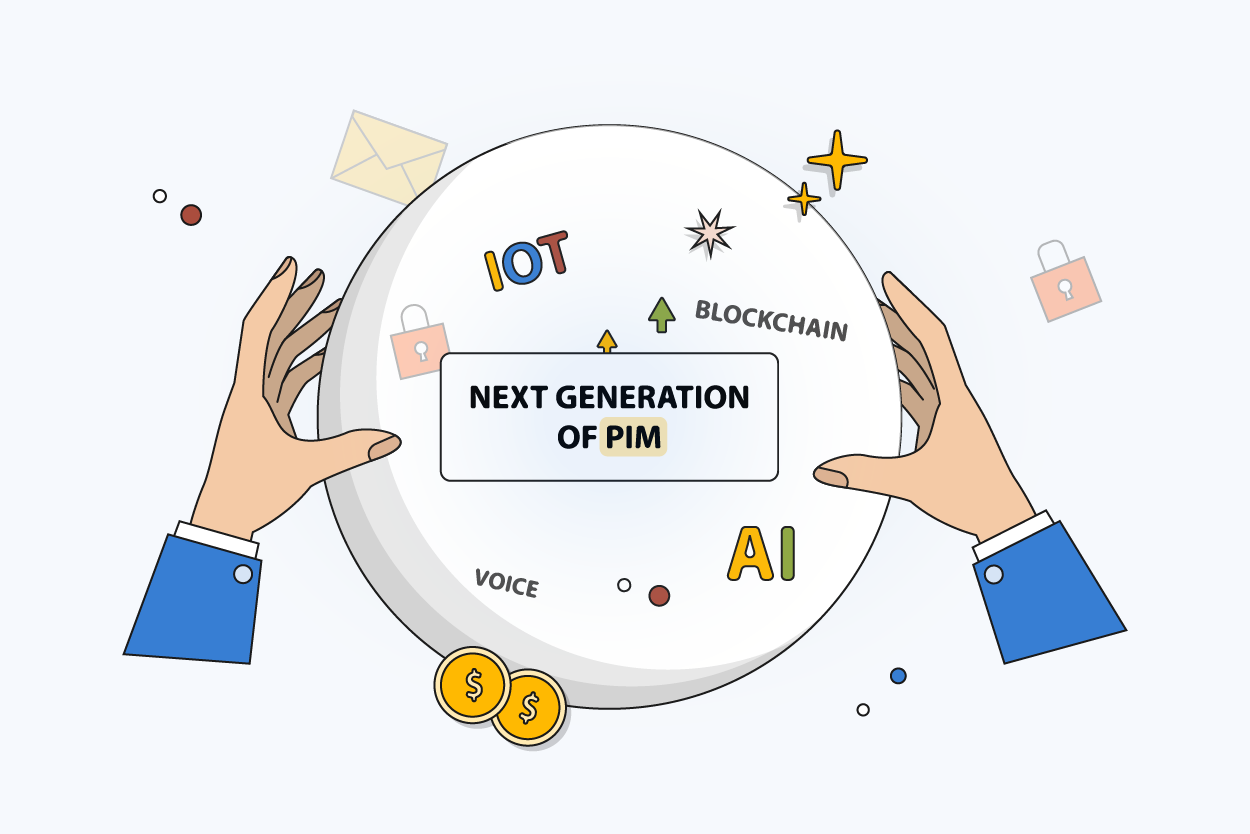
Stay Ahead of PIM Trends with PIMinto
PIMinto helps modern commerce teams navigate the complexity of product data management. Our platform supports AI-powered enrichment, omnichannel delivery, and other essential PIM features, all from a reliable cloud-based system.
Whether you’re managing 100 SKUs or 100,000, PIMinto is built to scale with your business and give you full control over your product content. Ready to simplify your stack, speed up go-to-market, and stay ahead of the trends?
Ready to Lead the PIM Revolution in 2025?
While your competitors struggle with outdated product data systems, you could be leveraging AI automation, omnichannel sync, and next-gen workflows. PIMinto puts you ahead of every trend we've covered – from day one.
Modified on: 2025-06-13


